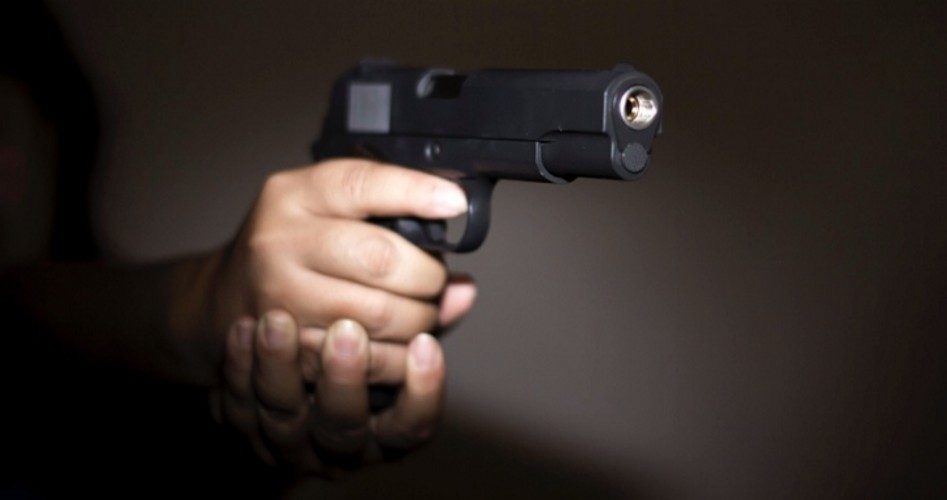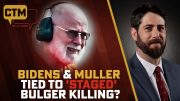
On August 14 the American Journal of Public Health published a lengthy and detailed study “Firearm Prevalence and Homicides of Law Enforcement Officials in the United States,” concluding that more police officers were being murdered in states where gun ownership was the highest. Concluded the report:
High public gun ownership is a risk for occupational mortality for LEOs [Law Enforcement Officials] in the United States. States should consider methods for reducing firearm ownership as a way to reduce occupational deaths of LEOs.
This was music to the ears of Maggie Fox, writing for NBC News. Fox apparently didn’t read the study but was only too willing to give one of its authors, David Swedler, plenty of attention. Gleefully she reported that “this study looks at who’s killing the cops, and it’s overwhelmingly people with private guns,” and then allowed Swedler this quote:
Officers are three times more likely to be murdered on the job in high gun ownership states in comparison with low gun ownership states. That was the big WOW for me.
If we’re interested in protecting police officers, we need to look at what’s killing them, and what’s killing them is guns.
Facetiously, Bob Owens, writing at Bearing Arms, interviewed three of the most popular guns carried by police to determine what they had against their owners:
[I] interviewed several guns in response to Mr. Swedler’s claims, including a Beretta 92FS, a Springfield Armory SC, and a Walther PPQ, asking [them] if they had any particular animosity towards law enforcement officers.
In response, the three handguns merely sat there.
A quick perusal of the study turns up that it found what Swedler and co-author David Hemenway hoped that it would. From page five:
We hypothesized that firearm ownership would be positively correlated with homicide rates of LEOs.
And, lo and behold, it did! The more guns, the more crime. Voila! More laws are needed.
Many were quick to point out a number of fatal flaws in the study, along with errors of logic. In addition there were admissions that their conclusion might be flawed. For example, the authors admitted: “It is possible that homicides of LEOs are driven by criminal offender theory: more frequent encounters with motivated violent offenders are the root cause of LEO homicide rates.”
When quizzed at that point, Swedler carefully maneuvered around the answer:
Hypothetically, officers might be put at increased risk if they are more frequently encountering violent criminals, but our data doesn’t find that to be the case. We find that officers are at an increased risk for being killed the more frequently they encounter guns in public settings.
Of course, that is what police officers are paid to do: intercept and protect the public from these violent offenders! According to the FBI, from 2004 to 2013, 46 percent of officer murderers had prior arrests for crimes of violence, 63 percent of them had been convicted on prior criminal charges, and 50 percent had received probation or parole to prior criminal charges!
None of this appeared, however, in the study. But there was an interesting and useful allusion to the benefit of carrying firearms. Wrote the authors: “LEOs in the United States carry firearms, usually a handgun.”
In addition, this was this from the study:
An international comparison of LEO mortality in New York City and London … found that 20 times as many officers died from intentional gunshot wounds in New York compared with London, where personal firearm ownership is markedly lower.
This logical error, known as post hoc ergo propter hoc, assumes that “after this, because of this,” without telling the reader that the LEO homicide rate in London increased by 50 percent in the eight years after Britain’s 1997 handgun ban went into effect.
John Lott, the founder of the Crime Prevention Research Center and author of More Guns, Less Crime, The Bias Against Guns, and Freedomomics, made short shrift of the alleged study:
It took [me] just a couple of minutes to read the paper and realize that the empirical work was done in a very non-standard way … the authors … only control for differences across states and not over time.
And it didn’t really measure gun ownership rates in each state either, but the suicide rate, marking that as an indicator of gun ownership, said Lott. He added:
Just accounting for the changes in crime rates over time completely reverses the claims made in the [report].
The NRA also took umbrage at the anti-gun propaganda masquerading as truth, pointing out that, when measured over time, LEO murders have been dropping precipitously while gun ownership has been increasing:
Law enforcement officer killings have been decreasing while ownership of firearms has been increasing dramatically.
From 1993 to 2013, the most recent year of data from the FBI and BATFE, the annual number of law enforcement officers feloniously killed dropped 61 percent, the number killed with firearms dropped 61 percent, and the number with handguns dropped 64 percent, while the American people acquired 140 million new firearms, including 64 million new handguns.
In 2013, the number of law enforcement officers feloniously killed by any means, with any firearms, or with handguns was less than half the annual average of the last 20 years.
None of this deliberate misinformation is surprising, however, considering not only the backgrounds of the authors but where they got their training as well as public utterances that remove any attempt at objectivity when the subject is gun ownership in the United States. While David Swedler was obtaining his Ph.D. at Johns Hopkins, he led studies of occupational homicides of law enforcement officers, and co-author David Hemenway heads up the Harvard Injury Control Research Center and the Harvard Youth Violence Prevention Center. In April, 2013, Hemenway provided observers with this homily about the ownership of guns, and manhood:
Instead of it being the mark of a real man that you can shoot somebody at 50 feet and kill them with a gun, the mark of a real man is that you would never do anything like that….
The gun is a great equalizer because it makes wimps as dangerous as people who really have skill and bravery and so I’d like to have this notion that anyone using a gun is a wuss. They aren’t anybody to be looked up to. They’re somebody to look down at because they couldn’t defend themselves or couldn’t protect others without using a gun.
And what about the Johns Hopkins School of Public Health where Swedler pursued his PhD while studying LEO homicide rates? The school was founded in 1916 with a grant from the Rockefeller Foundation but changed its name to the Johns Hopkins Bloomberg School for Public Health in 2001 in honor of Michael Bloomberg, who has over the years given the school more than $1.1 billion. Bloomberg is well known, of course, for his support of more gun control.
Observers of the current scene have now learned that not only must “studies” highly touted by the mainstream media be taken with an extra helping of salt, but that it’s also useful to look beyond and behind the authors and their backgrounds to determine whether they have credibility or are just providing another propaganda tool for the media to promote its agenda.
A graduate of an Ivy League school and a former investment advisor, Bob is a regular contributor to The New American magazine and blogs frequently at www.LightFromTheRight.com, primarily on economics and politics. He can be reached at [email protected].



